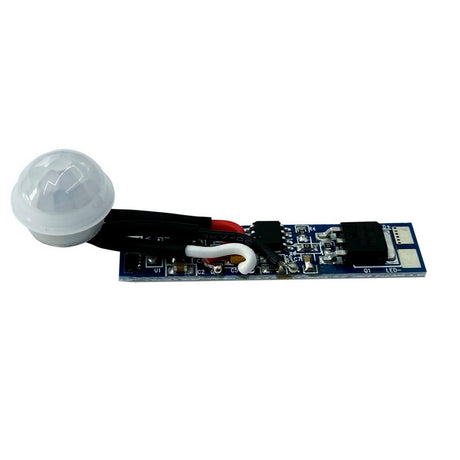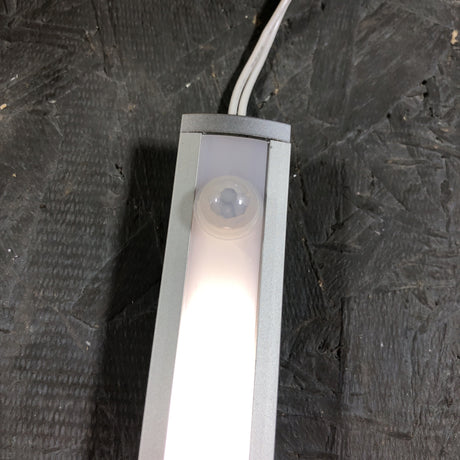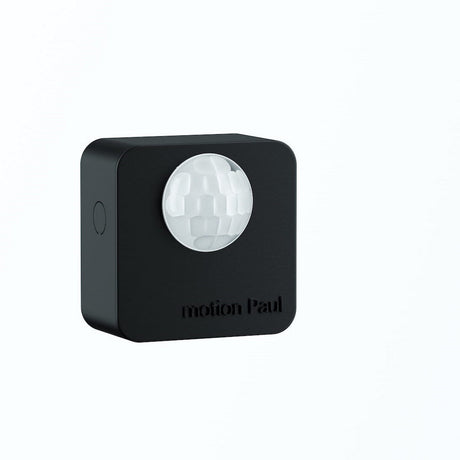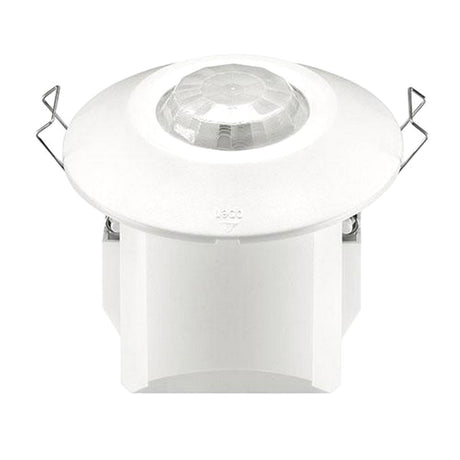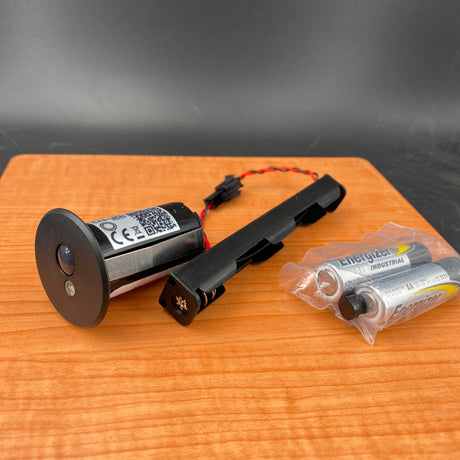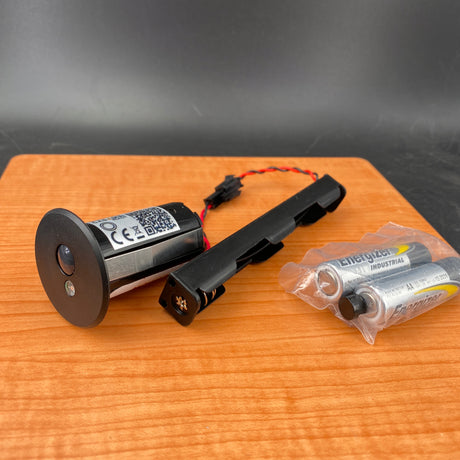Motion Sensor for LED Light Strip Channel Covers
$27.32 USDUnit price /UnavailableBattery Powered Motion Sensor for Casambi Lighting ~ Estol Motion Paul
$410.08 USDUnit price /UnavailableCasambi basicDIM Wireless Bluetooth Motion Sensor ~ Model 5DP 38RC
$131.80 USDUnit price /UnavailableCasambi Motion and Brightness Sensor - Black
$318.35 USDUnit price /UnavailableCasambi Motion and Daylight Sensor - Black
$318.35 USDUnit price /Unavailable
Wireless Motion Sensor Light - The Ultimate Guide to Home Security and Convenience
In today's fast-paced world, home security and convenience are top priorities for many homeowners. With the advancement of technology, wireless motion sensor lights have become a popular choice for enhancing home security and convenience.
At Wired4Signs USA, we understand the importance of providing high-quality LED solutions that cater to the diverse needs of our customers. Our extensive range of wireless motion sensor lights is designed to provide unparalleled security and convenience for your home or office.
From indoor motion sensor lights for closets and under cabinet lighting to outdoor motion lights for security and illumination, our wireless motion sensor lights offer a comprehensive solution for all your lighting needs. With our cutting-edge technology and innovative designs, you can rest assured that your home or office is protected and well-lit, even when you're not there.
What is a Wireless Motion Sensor Light and How Does it Work
A wireless motion sensor light is a type of lighting device that uses motion detection technology to automatically turn on or off in response to movement within a specific area. These lights are designed to provide enhanced security, convenience, and energy efficiency by eliminating the need for manual switching or timers.
Wireless motion sensor lights typically operate using one of several technologies, including passive infrared (PIR), active infrared, photoelectric, microwave, or dual technology. Here's a brief overview of how each type works:
- Passive Infrared (PIR): PIR sensors detect changes in room temperatures by detecting body heat. They emit no radiation and are commonly used in home security systems. When a person enters the detection area, the sensor detects the change in temperature and triggers the light to turn on.
- Active Infrared: Active infrared sensors emit infrared radiation and detect changes in the reflected radiation when an object moves. They are often used in outdoor lighting applications.
- Photoelectric: Photoelectric sensors use a beam of light to detect movement. They consist of a transmitter and receiver, where the transmitter emits a light beam and the receiver detects the interruption of this beam when an object passes through it.
- Microwave: Microwave sensors emit microwave pulses and measure the reflections from moving objects. They are more expensive and vulnerable to electrical interference but can cover larger areas.
- Dual Technology: Dual technology sensors combine passive infrared and microwave sensors to reduce false alarms and increase detection accuracy.
Wireless motion sensor lights usually consist of a sensor unit and a light fixture. The sensor unit contains the motion detection technology, and the light fixture houses the light source. When the sensor detects movement, it sends a signal to the light fixture, which then turns on the light.
Advantages of using a wireless motion sensor light for home security and convenience
Wireless motion sensor lights offer key benefits for home security and convenience:
- Enhanced Security: Deters intruders by illuminating when motion is detected, making your home less vulnerable.
- Increased Visibility: Provides extra visibility, helping you and your neighbors spot any suspicious activity easily.
- Convenience: Easy installation without complex wiring, ideal for enhancing security effortlessly.
- Energy Efficiency: Designed to be energy-efficient, reducing energy bills and promoting eco-friendliness.
- Peace of Mind: Programmed to light up at specific times or motion, ensuring a secure and well-lit home.
- Smart Home Integration: Can be connected to smart home systems for remote control and monitoring.
- Cost-Effective: Affordable compared to traditional wired systems, offering security without high costs.
- Easy Installation: Simple to install with options like screw-in or adhesive mounting for DIY ease.
- Customization: Available in various styles and sensitivity levels to suit individual preferences.
- Maintenance-Free: Long-lasting batteries and minimal maintenance, reducing upkeep tasks for homeowners.
Best Wireless Under Cabinet Lighting Motion Sensor - Brighten Up Your Kitchen and More
Wireless under cabinet lighting with motion sensors is a game-changer for your kitchen and beyond. These smart lighting solutions automatically illuminate when movement is detected, providing hands-free convenience and enhanced visibility.
The Casambi basicDIM Wireless Bluetooth Motion Sensor is a top choice, seamlessly integrating with Casambi's home automation and wireless lighting control network. This sensor uses passive infrared (PIR) technology to detect motion and trigger the lights.
Another great option is the Motion Paul intelligent battery-operated motion sensor, which can be controlled through the CASAMBI app to automatically activate and deactivate lights based on movement. Upgrade your kitchen, home office, or any space with the convenience and efficiency of wireless under cabinet lighting with motion sensors.
Indoor Motion Sensor Light Wireless
Motion Detector Security System - Boost Your Home's Security with Advanced Technology
Safeguarding your home is a top priority, and a motion detector security system can provide the extra layer of protection you need. These advanced systems utilize movement sensors security to detect any unauthorized activity around your property. By incorporating security motion detectors strategically placed indoors and outdoors, you can receive instant alerts on your smartphone or trigger a loud siren to deter potential intruders.
Many modern systems like what we offer also integrate wireless security lights that illuminate upon detecting motion, further enhancing visibility and deterrence. With customizable settings and real-time notifications, a motion detector security system offers peace of mind, knowing that your home is actively monitored and secured.
Wireless Outdoor Motion Lights

Enhance your home's exterior security and safety with wireless outdoor motion lights. These innovative lighting solutions combine convenience with deterrence, automatically illuminating when they detect movement.
Outdoor wireless motion sensor lights are a practical choice for driveways, walkways, and entrances, providing hands-free illumination when you need it most. Many wireless outdoor motion lights we offer feature durable, weather-resistant designs to withstand harsh outdoor conditions.
Beyond lighting, these wireless outdoor sensor lights can also act as house motion detectors, alerting you to potential intruders or unwanted activity around your property. With customizable settings like adjustable sensitivity and shut-off timers, you can tailor the lights to your specific needs.
LED Closet Light with Motion Sensor
Using a closet light with motion sensor is a smart and energy-efficient solution for your closet. These led closet lights with motion sensors automatically turn on when you open the closet door, providing hands-free illumination exactly when you need it.

The closet motion detector light technology eliminates the need to fumble for switches in the dark, making it easier to find what you're looking for quickly. LED closet lights motion activated not only offer convenience but also save energy by consuming minimal power while providing ample brightness.
When choosing the best motion sensor led closet light, consider factors like coverage area, brightness levels, and battery life to find the perfect fit for your needs. Top-rated options offer integrated closet light fixtures motion sensor designs for seamless installation and a clutter-free closet space.
What is the difference between a light sensor and a motion sensor?
Light sensors and motion sensors are two different types of sensors commonly used in lighting and security applications. While they may seem similar, they operate based on different principles and serve distinct purposes.
A light sensor, also known as a photosensor or photocell, detects the presence or absence of light. It measures the ambient light levels in an area and can be used to automatically turn lights on when it gets dark and off when there is sufficient natural light. Light sensors are often used in outdoor lighting systems, street lamps, and energy-saving indoor lighting controls.
On the other hand, a motion sensor, or motion detector, is designed to detect movement or activity within a specific area. It uses technologies like passive infrared (PIR), ultrasonic waves, or microwave radiation to sense changes in its surroundings caused by moving objects or people. When motion is detected, the sensor can trigger actions such as turning on lights, activating security alarms, or sending notifications.
While light sensors react to changes in light levels, motion sensors respond to physical movement within their detection range. Motion sensors are commonly used in security systems, automatic lighting controls, and smart home automation setups to enhance safety, convenience, and energy efficiency.
Frequently Asked Questions
Q: How do wireless motion sensor lights communicate with other devices?
A: Wireless motion sensor lights communicate with other devices primarily through wireless protocols and technologies like Wi-Fi, Bluetooth, ZigBee, and radio frequency (RF). When motion is detected, the sensor sends a wireless signal to the light or a connected hub/controller, triggering the light to turn on. Some can also integrate with smart home systems for remote control and automation capabilities.
Q: What are the factors to consider when choosing a wireless motion sensor light for home security?
A: When choosing a wireless motion sensor light for home security, the key factors to consider are: Coverage area and detection range, sensitivity and adjustment settings, weatherproof and durable housing for outdoor use, battery life or wired power source, integration with existing security systems or smart home platforms, and additional features like adjustable light brightness or customizable settings.
Q: How do wireless motion sensor lights help deter intruders and increase visibility around your home?
A: Wireless motion sensor lights help deter intruders and increase visibility around your home by automatically illuminating when they detect movement in the area. The sudden burst of light can startle potential intruders, discouraging them from attempting a break-in.
Q: How does a movement sensor work?
A: A movement sensor, also known as a motion detector or motion sensor, works by detecting changes in its surrounding environment caused by moving objects or people. It emits a signal (infrared, ultrasonic, or microwave) and constantly monitors for any disturbances or changes in the reflected signal patterns. When an object or person moves within the sensor's field of view or detection range, it causes a change in the reflected signal. The sensor detects this change and interprets it as motion.
Q: How long do motion light sensors last?
A: The lifespan of motion light sensors can vary depending on several factors, but generally, they have an expected lifespan of around 5-10 years.
